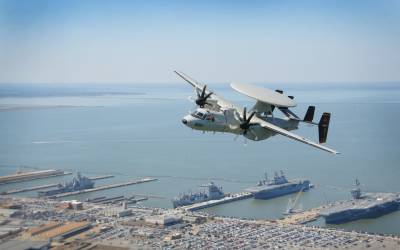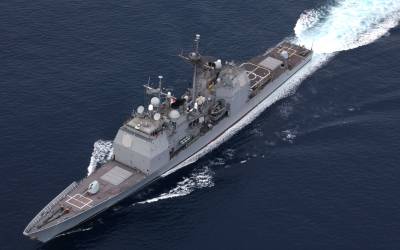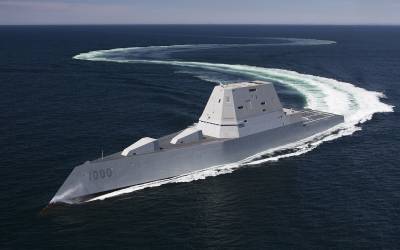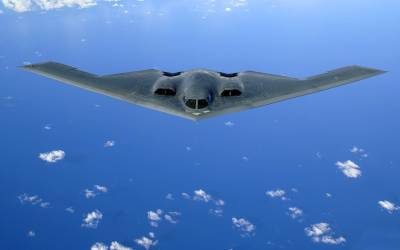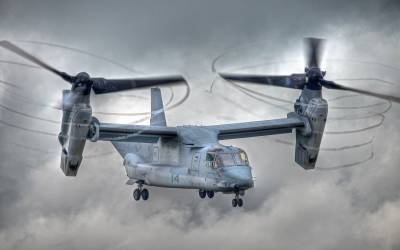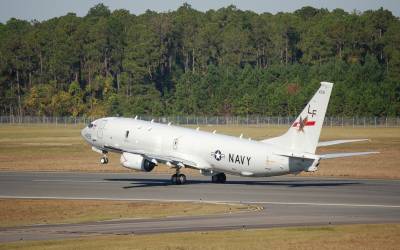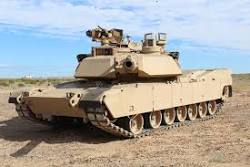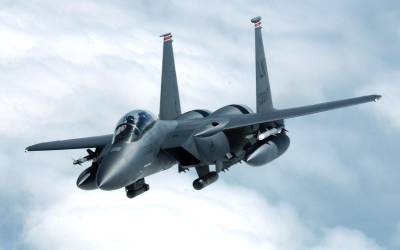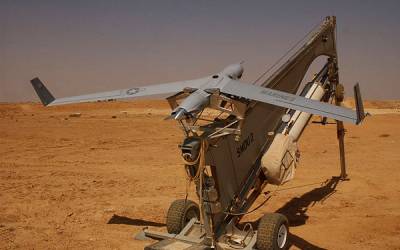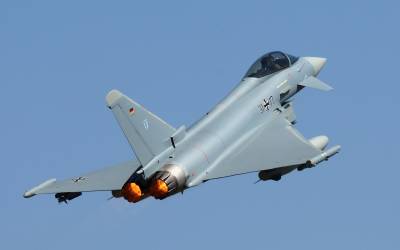April 26, 2024
E-2D Hawkeye: The Navy's New AWACS
(click to view full) Northrop Grumman’s E-2C Hawkeye is a carrier-capable “mini-AWACS” aircraft, designed to give long-range warning of incoming aerial threats. Secondary roles include strike command and control, land and maritime surveillance, search and rescue, communications relay, and even civil air traffic control during emergencies. E-2C Hawkeyes began replacing previous Hawkeye versions in 1973. […]
Full Article Status: paid
April 25, 2024
Serious Dollars for AEGIS Ballistic Missile Defense (BMD)
AEGIS-BMD: CG-70 launches SM-3 (click to view full) The AEGIS Ballistic Missile Defense System seamlessly integrates the SPY-1 radar, the MK 41 Vertical Launching System for missiles, the SM-3 Standard missile, and the ship’s command and control system, in order to give ships the ability to defend against enemy ballistic missiles. Like its less-capable AEGIS […]
Full Article Status: paid
April 24, 2024
Flexible G/ATORs: The USMC's Multi-Mission AESA Ground Radars
G/ATOR diorama (click to view full) The US military’s long run of unquestioned air superiority has led to shortcuts in mobile land-based air defenses, and the US Marines are no exception. A December 2005 release from Sen. Schumer’s office [D-NY] said that: “Current radar performance does not meet operational forces requirements… consequences could potentially allow […]
Full Article Status: paid
April 24, 2024
The USA's DDG-1000 Zumwalt Class Program: Dead Aim, Or Dead End?
67% of the fleet (click to view full) DID’s FOCUS Article for the DDG-1000 Zumwalt Class “destroyer” program covers the new ships’ capabilities and technologies, key controversies, associated contracts and costs, and related background resources. The ship’s prime missions are to provide naval gunfire support, and next-generation air defense, in near-shore areas where other large […]
Full Article Status: paid
April 23, 2024
USA's B-2 Bombers Leading the Way in Contracting for Availability
All together now… (click to view full) Britain’s practice of “contracting for availability” for key equipment, rather than paying for spare parts and maintenance hours, may be its most significant defense procurement reform. In a world where older air, sea, and ground vehicle fleets are growing maintenance demands beyond countries’ available budgets, it’s an approach […]
Full Article Status: free
April 22, 2024
V-22 Osprey: The Multi-Year Buys, 2008-2021
(click to view full) In March 2008, the Bell Boeing Joint Project Office in Amarillo, TX received a $10.4 billion modification that converted the previous N00019-07-C-0001 advance acquisition contract to a fixed-price-incentive-fee, multi-year contract. The new contract rose to $10.92 billion, and was used to buy 143 MV-22 (for USMC) and 31 CV-22 (Air Force […]
Full Article Status: paid
April 19, 2024
P-8 Poseidon MMA: Long-Range Maritime Patrol, and More
P-8A Poseidon (click to view full) Maritime surveillance and patrol is becoming more and more important, but the USA’s P-3 Orion turboprop fleet is falling apart. The P-7 Long Range Air ASW (Anti-Submarine Warfare) Capable Aircraft program to create an improved P-3 began in 1988, but cost overruns, slow progress, and interest in opening the […]
Full Article Status: paid
April 18, 2024
Snakes and Rotors: The H-1 Helicopter Program
UH-1Y and AH-1Z by Neville Dawson The US Marines’ helicopter force is aging at all levels, from banana-shaped CH-46 Sea Knight transports that are far older than their pilots, to the 1980s-era UH-1N Hueys and AH-1W Cobra attack helicopters that make up the Corps’ helicopter assault force. While the tilt-rotor V-22 Osprey program has staggered […]
Full Article Status: paid
April 17, 2024
Australia's MH-60R Maritime Helicopters
MH-60Rs fire Hellfire (click to view full) Australia’s AIR 9000, Phase 8 project aimed to buy 24 modern naval helicopters to 16 existing S-70B-2 Seahawks, along with the disastrous A$1.1 billion, 11-helicopter SH-2G “Super Seasprite” acquisition attempt. With a total sales and support value of over A$ 3 billion, it was a highly coveted award. […]
Full Article Status: free
April 15, 2024
Digital Abrams: The M1A2 SEP Program
M1A2 SEP (click to view full) America’s M1 Abrams tanks come in a number of versions. In addition to the M1A1 that is now standard, the US Army is beginning to field its M1 TUSK for urban warfare. It also operates the M1A2 System Enhancement Program (SEP), currently the most advanced standard variant. This Spotlight […]
Full Article Status: free
April 15, 2024
Aging Aircraft: USAF F-15 Fleet Sees Renewed Interest
F-15C over DC (click to view full) “Array of Aging American Aircraft Attracting Attention” discusses the issues that accompany an air force whose fighters have an average age of over 23.5 years – vs. an average of 8.5 years in 1967. One of the most obvious consequences is the potential for fleet groundings due to […]
Full Article Status: sample
April 12, 2024
From Dolphins to Destroyers: The ScanEagle UAV
ScanEagle launch (click to view full) ScanEagle’s base Insight UAV platform was originally developed by Washington state’s Insitu, Inc. to track dolphins and tuna from fishing boats, in order to ensure that the fish you buy in supermarkets is “dolphin-safe”. It turns out that the same characteristics needed by fishing boats (able to handle salt […]
Full Article Status: sample
April 11, 2024
F-35 Lightning: The Joint Strike Fighter Program
F-35B: off probation (click to view full) The $382 billion F-35 Joint Strike fighter program may well be the largest single global defense program in history. This major multinational program is intended to produce an “affordably stealthy” multi-role fighter that will have 3 variants: the F-35A conventional version for the US Air Force et. al.; […]
Full Article Status: free
April 11, 2024
KC-46A Pegasus Aerial Tanker Completes Firsts
KC-135: Old as the hills… (click to view full) DID’s FOCUS articles cover major weapons acquisition programs – and no program is more important to the USAF than its aerial tanker fleet renewal. In January 2007, the big question was whether there would be a competition for the USA’s KC-X proposal, covering 175 production aircraft […]
Full Article Status: paid
April 8, 2024
Eurofighter's Future: Tranche 3, and Beyond
Italian Eurofighters (click to view full) The multi-national Eurofighter Typhoon has been described as the aerodynamic apotheosis of lessons learned from the twin engine “teen series” fighters that began with the F-14 and F-15, continued with the emergence of the F/A-18 Hornet, and extended through to the most recent F/A-18 Super Hornet variants. Aerodynamically, it’s […]
Full Article Status: paid
April 4, 2024
US Hellfire Missile Orders, FY 2011-2024
USN MH-60S test (click to view full) Hellfire I/II missiles are the USA’s preferred aerial anti-armor missile, and are widely deployed with America’s allies. They equip America’s helicopter fleets (AH-64, AH-1, OH-58D, MH-60S/R), AH-64 and S-70 helicopters flown by its allies, and even Australia and France’s Eurocopter Tiger attack helicopters. Range is officially listed as […]
Full Article Status: free
April 3, 2024
AH-64E Apache Block III: Evolving Battlefield Roles
AH-64 in Afghanistan (click to view full) The AH-64 Apache will remain the US Army’s primary armed helicopter for several more decades, thanks to the collapse of the RAH-66 Comanche program, and the retirement sans replacement of the US Army’s Armed Reconnaissance Helicopter (ARH). Apaches also serve with a number of American allies, some of […]
Full Article Status: paid
April 1, 2024
MQ-9 Reaper: Unfettered for Export
0 Reaper, ready… (click to view full) The MQ-9 Reaper UAV, once called “Predator B,” is somewhat similar to the famous Predator. Until you look at the tail. Or its size. Or its weapons. It’s called “Reaper” for a reason: while it packs the same surveillance gear, it’s much more of a hunter-killer design. Some […]
Full Article Status: paid
April 1, 2024
ER/MP Gray Eagle: Enhanced MQ-1C Predators for the Army
ER/MP, armed (click to view full) Its initial battles were fought within the Pentagon, but the US Army’s high-end UAV has made its transition to the battlefield. The ER/MP program was part of the US Army’s reinvestment of dollars from the canceled RAH-66 Comanche helicopter program, and directly supports the Army’s Aviation Modernization Plan. The […]
Full Article Status: paid
March 29, 2024
Tomahawk's Chops: xGM-109 Block IV Cruise Missiles
Block IV Cutaway (click to view full) Block IV Tomahawk is the current generation of the Tomahawk family of cruise missiles. The BGM-109 Tomahawk family began life in the 1980s as sub-sonic, low-flying nuclear strike weapons, before being developed into long-range RGM/UGM-109 conventional attack missiles. They’re most frequently launched from submarines and surface ships, and […]
Full Article Status: free

